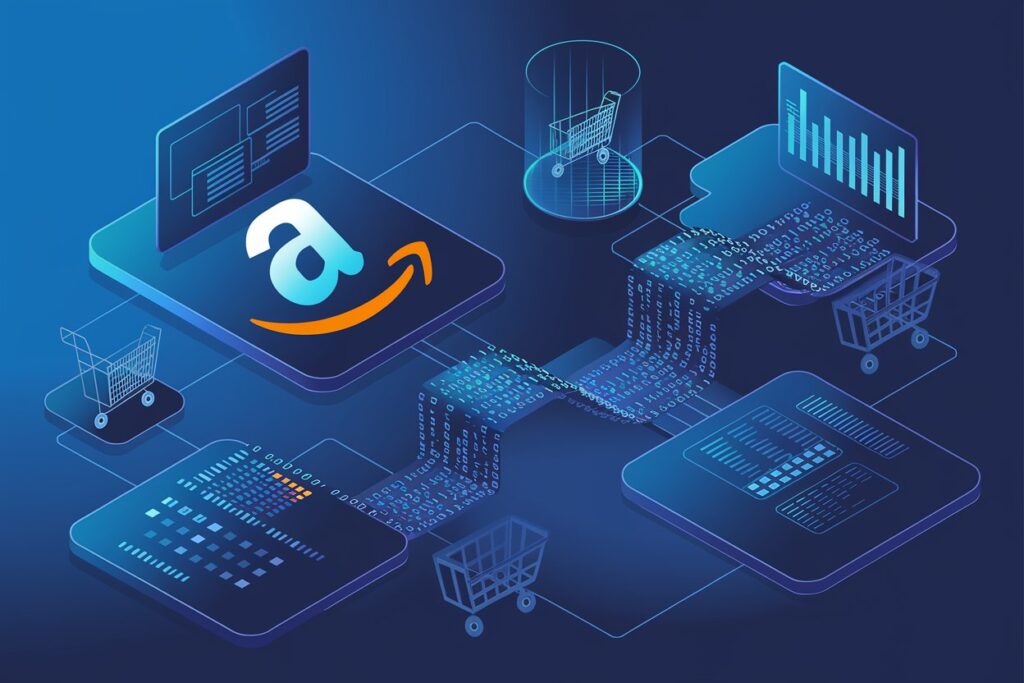Introduction
In today’s fiercely competitive e-commerce environment, acquiring accurate and real-time Amazon product data has become the key to success for businesses. However, traditional data collection methods often face challenges like inefficiency, high technical barriers, and poor stability. Is there a better, more efficient way to retrieve Amazon data? The answer is Scrape API.
As a professional data collection API service, Scrape API enables businesses to bypass Amazon’s anti-scraping mechanisms and easily obtain high-quality, structured data without coding. Today, we will explore Scrape API from multiple perspectives, diving deep into its features, use cases, and practical tips to help e-commerce businesses stand out in data-driven operations.
What is Amazon Scrape API?
Scrape API is a service that directly extracts data from target websites through API interfaces. Unlike traditional scraping tools, it requires no complex code and allows users to quickly retrieve target data by simply configuring relevant parameters.
Key Advantages of Scrape API
- Efficiency
Traditional scraping tools often struggle with complex anti-scraping mechanisms. Scrape API leverages advanced anti-anti-scraping techniques, delivering faster and more stable data collection. - Ease of Use
No programming expertise is required. A simple API call is all it takes to complete a data collection task, significantly lowering the entry barrier. - Scalability
It supports multiple data output formats (e.g., JSON, XML) and allows users to customize extraction rules to meet diverse business needs. - Security
Equipped with a global proxy IP pool and anti-anti-scraping mechanisms, Scrape API ensures stable and secure data collection, preventing bans caused by frequent access.
Why Choose Scrape API for Amazon Data Collection?
Addressing the Pain Points of Traditional Methods
- Bypassing Amazon’s Anti-Scraping Mechanisms
Scrape API features intelligent recognition technologies that bypass Amazon’s complex CAPTCHAs, dynamic content loading, and access frequency controls. - Improving Collection Efficiency
Compared to traditional scraping, Scrape API simplifies the process and increases speed, saving considerable development and maintenance costs. - Providing High-Quality Data
Scrape API outputs clear and structured data for fields like product prices, inventory, reviews, and sales, enabling easier analysis.
Common Use Cases
- Price Monitoring: Track competitors’ price changes in real time to optimize pricing strategies.
- Product Information Collection: Gather product titles, descriptions, images, reviews, and more for market analysis or product comparison.
- Market Research: Conduct large-scale data collection to uncover consumer trends and identify new market opportunities.
Core Features of Scrape API
1. API Design
- RESTful API
Built on RESTful architecture, it provides clear interface documentation, making it easy for users to integrate into their existing systems. - Customizable Request Parameters
Users can flexibly configure collection tasks, such as filtering data ranges or specifying target regions.
2. Data Format Support
- Diverse Data Outputs
It supports formats like JSON and XML, enabling direct use or import into analysis tools. - Customizable Data Structures
Users can extract only the required fields, avoiding unnecessary data consumption.
3. Proxy IP Services
- Global Distributed Proxy Pool
Comes with a vast pool of IP resources, ensuring speed and stability for cross-regional data collection. - Intelligent Switching Mechanism
Automatically switches IPs to prevent bans caused by high access frequency.
4. Anti-Anti-Scraping Measures
- Bypassing CAPTCHAs
Built-in CAPTCHA recognition eliminates the need for additional handling. - Dynamic Content Loading
Simulates real user behavior to capture JavaScript-generated content effortlessly.
How to Use Scrape API to Extract Amazon Data
1. Register an Account
Visit the Pangolinfo website and complete the registration process in a few simple steps.
2. Generate an API Key
Log in to the backend, go to the API management page, and create your exclusive API key for request authentication.
3. Send API Requests
Use programming languages like Python or JavaScript to call the API via HTTP requests. Here’s an example in Python:
import requests
api_url = "https://api.pangolinfo.com/scrape"
headers = {
"Authorization": "Bearer YOUR_API_KEY"
}
params = {
"url": "https://www.amazon.com/product-page",
"fields": ["title", "price", "rating"]
}
response = requests.get(api_url, headers=headers, params=params)
print(response.json())
4. Parse the Data
Extract required information from the returned JSON data and store or process it further.
Amazon Scrape API vs. Traditional Scraping
| Comparison | Scrape API | Traditional Scraping |
|---|---|---|
| Development Cost | No coding needed, easy to use | Complex coding, time-intensive |
| Maintenance Cost | Automatically maintained | Frequent updates required |
| Performance | Efficient and stable | Slower and prone to restrictions |
Summary of Advantages
Scrape API’s ease of use, efficiency, and stability give it unparalleled advantages in data collection, making it the go-to alternative to traditional scraping methods.
Practical Cases
Case 1: Extracting Amazon Product Reviews
Objective: Extract user reviews and ratings for a popular product to analyze customer needs and improve product design.
Steps:
- Identify the Target Product Page: Obtain the product’s unique identifier (e.g., ASIN).
- Build API Requests: Use Scrape API to specify fields like reviewer name, rating, review text, and review date.
- Parse the Data: Extract useful information from the returned JSON data.
Sample Code:
params = {
"url": "https://www.amazon.com/product-reviews/B08N5WRWNW",
"fields": ["reviewer", "rating", "review_text", "review_date"]
}
response = requests.get(api_url, headers=headers, params=params)
reviews = response.json()
# Extract review content
for review in reviews:
print(f"User: {review['reviewer']}")
print(f"Rating: {review['rating']}")
print(f"Review: {review['review_text']}\n")
Outcome:
The structured review data returned by the API enables quick identification of common positive or negative feedback, facilitating product improvements and service optimizations.
Case 2: Monitoring Competitor Prices
Objective: Collect real-time price data for competing products to adjust pricing strategies.
Steps:
- Compile a List of Competing Products: Gather product links or ASINs of competitors.
- Schedule API Calls: Use scripts to periodically call Scrape API and retrieve the latest price information.
- Generate Comparison Reports: Store the data in a database or spreadsheet for trend analysis.
Sample Code:
import time
products = ["ASIN1", "ASIN2", "ASIN3"]
while True:
for asin in products:
params["url"] = f"https://www.amazon.com/dp/{asin}"
params["fields"] = ["title", "price"]
response = requests.get(api_url, headers=headers, params=params)
product_data = response.json()
print(f"{product_data['title']} Current Price: {product_data['price']}")
time.sleep(3600) # Call API every hour
Outcome:
Periodic monitoring enables businesses to stay ahead in pricing wars and secure a competitive market position.
Case 3: Building an Amazon Product Data Analysis Platform
Objective: Create a data platform that collects Amazon product information in real-time for use by the market analysis team.
Steps:
- Define Data Requirements: Identify the fields to collect, such as product name, price, review count, and stock status.
- Integrate Data Storage: Store Scrape API data in a database with a clear classification structure.
- Develop Visualization Tools: Use BI tools (e.g., Tableau) or Python libraries (e.g., Pandas, Matplotlib) for data presentation.
Outcome:
This platform-based data tool enables teams to quickly identify trending products and formulate effective operational strategies.
Conclusion
Scrape API, as a professional Amazon data collection tool, provides businesses with efficient and convenient solutions through its powerful features, flexible configurations, and stable performance. Moving forward, Scrape API will continue to expand its application scenarios, offering robust data support for business operations and decision-making. If you’re looking to gain a competitive edge in e-commerce, try Scrape API today!
Keyword : Scrape API, Amazon Data Extraction API, Amazon Data Collection, Data Scraping, Anti-Scraping, Proxy IP, Market Research






